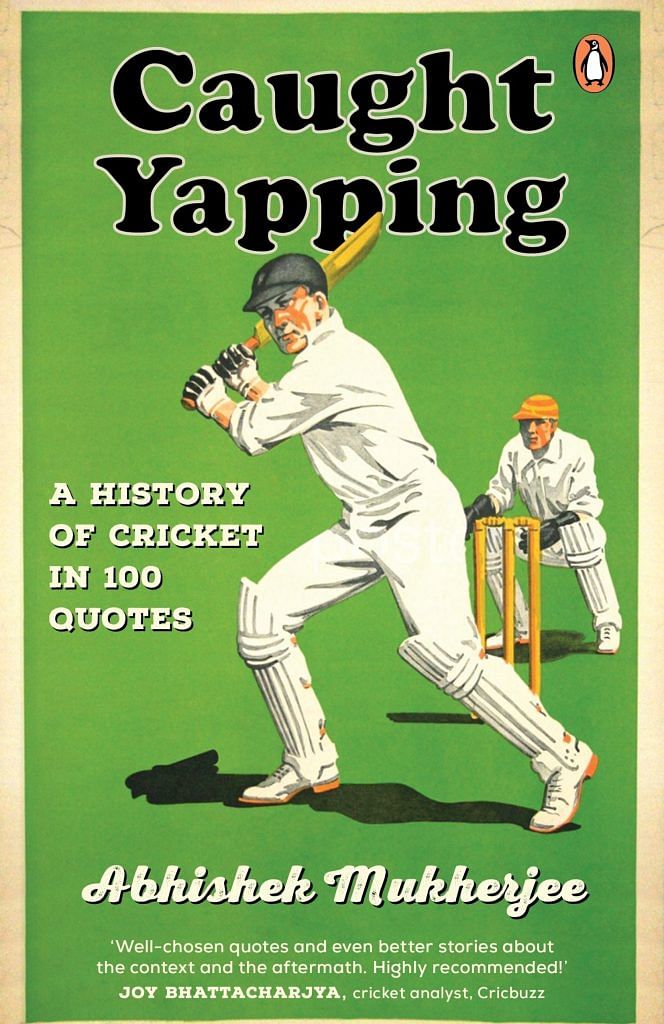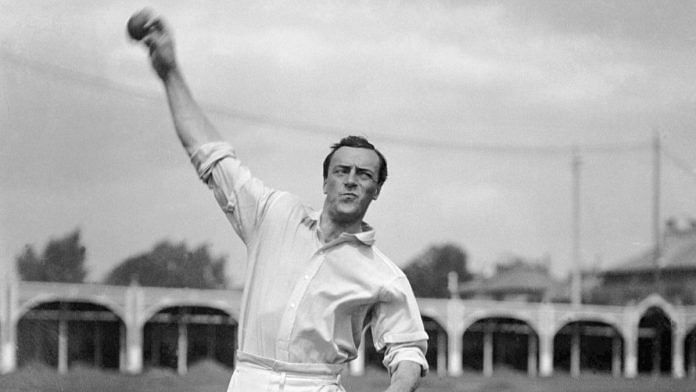‘It soon occurred to me that if one could pitch a ball which broke in a certain direction and with more or less the same delivery make the next ball go in the opposite direction, one would mystify one’s opponent.’ — Bernard Bosanquet, writing in the 1925 Wisden
Almanack about an 1897 incident.
Few expected South Africa to compete in the 1905–06 home series against an Ashes-winning England. The tourists, however, should have looked at their defeat against Transvaal more seriously. Chasing 176, they made only 115 against Reggie Schwarz (5–34) and the greatest all-rounder of the era, Aubrey Faulkner (3–62). Schwarz had also taken 4–80 in the first innings and Faulkner 3–46.
Schwarz and Faulkner, leg-spinners both, were among the five South African debutants in the first Test match of that series, at Johannesburg. Two others were Bert Vogler and batting all-rounder Gordon White. Both bowled leg-breaks as well.
South Africa won a Test match for the first time. It had taken them thirteen Tests and sixteen years to achieve this. In fact, they thrashed England 4–1. Schwarz returned 18 wickets at 17.22, Faulkner 14 at 19.42, Vogler 9 at 22.23 and White 2 at 15.
Let us take some time out to understand this. Most Test teams hesitate to pick two leg-spinners in a Test XI; South Africa used four of them to win their first-ever Test series (though White was really picked for his batting). That was because all of them had mastered a novel craft: the googly.
England had no clue against this innovation, popularized—if not pioneered—by Bernard Bosanquet, one of their own. Schwarz had learnt this craft from him.
Born in Kent, Schwarz had migrated to Johannesburg to work as Abe Bailey’s secretary. He was part of a side that Bosanquet led to North America in 1901. The duo then clashed during South Africa’s 1904 tour of England. In his greatest season, Bosanquet put the googly to great use to claim 132 wickets at 21.62 (to go with 1405 runs at 36.02).
At Lord’s, Bosanquet took 9–107 to bowl out the South Africans for 194. Schwarz did not get a wicket, but Bosanquet’s sorcery caught his eye. Until this point, he was a batter who bowled some leg-spin, but now he decided to give it a shot.
Against Oxford, Schwarz got 5–27—all bowled. He followed that with 5–48—all bowled or leg-before—against Middlesex, Bosanquet’s team. He finished the tour with 65 wickets at an impressive 18.26. More significantly, he brought the googly home.
The googly might have been new to Schwarz, but it had debuted in the County Championship in 1900. Playing for Leicestershire, the left-handed Samuel Coe had made 98 against Middlesex at Lord’s. He was facing Bosanquet, once a bowler of genuine pace but now a practitioner of leg-breaks.
Bosanquet tossed the ball up. Coe stepped out to cash in on what he clearly thought was a gift, but the ball landed, went the other way, beat Coe’s bat, and—in Bosanquet’s own words—bounced four times on its way to wicketkeeper William Roberts. So stunned was Coe by this that he forgot to return to the crease—and was duly stumped.
‘The incident was rightly treated as a joke, and was the subject of ribald comment, but this small beginning marked the start of what came to be termed a revolution in bowling,’ Bosanquet recollected.
Was this the first googly in history? Perhaps not, but it is unanimously accepted that Bosanquet’s dismissal of Coe was the first instance in professional cricket.
Bosanquet had been practising the googly for three years before that dismissal. While playing twisti-twosti, a game in which the player would bounce a tennis ball on a table to ensure the opponent at the other end could not catch it, he had accidentally discovered how it worked in 1897. He had also figured out that the one-two trick, of a leg-break followed by a googly, ‘would mystify one’s opponent’.
He moved on from the tennis ball at twisti-twosti to the soft ball at stump-cricket to the cricket ball. During Oxford’s matches in 1899, he would demonstrate it at the lunch intervals—as a party trick.
After conquering Coe, he tried his new trick outside England. He had fond memories of the first googly bowled in Australia, to a well-set Victor Trumper: ‘Two leg-breaks were played beautifully to cover, but the next ball (delivered with a silent prayer), pitching in the same place, saw the same graceful stroke played—and struck the middle-stump instead of the bat!’
While ‘googly’ and ‘wrong ’un’ are the commonly used phrases, Bosie (or Bosey)—named after the man who made it mainstream—remained in vogue for years.
 This excerpt from Caught Yapping: A History of Cricket in 100 Quotes by Abhishek Mukherjee has been published with permission from Penguin Random House India.
This excerpt from Caught Yapping: A History of Cricket in 100 Quotes by Abhishek Mukherjee has been published with permission from Penguin Random House India.






